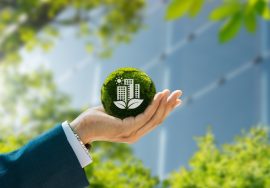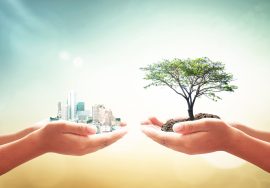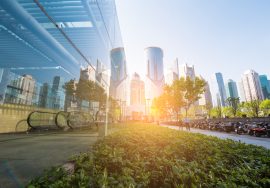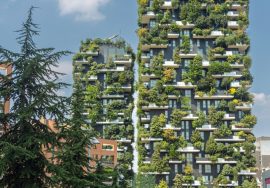
Sustainable Construction: Techniques For A Healthier Future
With an expected doubling of the world’s population by 2050, the environmental impact of housing demand, development, upkeep, and use will only increase. Housing is now the largest source of hazardous gases like carbon dioxide (CO2). People in India have gradually realised the dangers of using conventional building materials and designs and consciously opt for projects/materials that promote sustainability.
According to the U.S. Green Building Council (USGBC), a non-profit organisation that talks about sustainability in building design, construction, and operation, there has been a dramatic increase in the practice of sustainable development in India. The Dodge Data and Analytics ‘World Green Building Trends Report 2021’ has ranked India third in the world on its annual list of the ‘Top 10 Countries and Regions for LEED’. In the future, it will be necessary for codes and standards to include climate models and science to adapt to climate change, protect communities, and make the world more sustainable and resilient overall.
Sustainability In Construction
Ecological balance is a primary goal of sustainability in the majority of businesses and industries that use the term. The construction industry is not designed for long-term viability. Many of the resources used in one building are difficult or impossible to reuse; in another, actual construction can degrade air quality, but buildings are increasingly needed as the population expands. Crucially, this is a business, and the company must primarily make a profit. So, how does construction become more environment-friendly? What are sustainable construction methods for dealing with construction waste and constructing a sustainable building with low energy consumption? How can we incorporate green building practices into a building project?
Reduce And Reuse
Sustainable construction entails more than just ensuring that resources are used efficiently in projects. It involves considering the environmental impacts caused by the materials used and the processes deployed to complete the job. LEED construction is the current industry standard for sustainable construction. It promotes a system of sustainable construction that goes above and beyond minimum building codes to ensure that new buildings are functional today and sustainable in the future, energy-efficient, and made from responsibly sourced materials. There are three lessons the construction industry is imbibing today: reducing, reusing, and recycling in the interest of sustainability and environmental protection.
Green construction goes beyond sustainability by asking how we can reduce our environmental impact during the construction process and, in some cases, how we can offset the impact we do have. Green construction raises the bar for sustainability by focusing on carbon-neutral construction materials and methods that use renewable energy sources now and in the future. Environmental sustainability in construction is essential to lowering one’s carbon footprint.
Government’s Role In Sustainable Construction
Regulators play an important role in sustainable construction by providing the appropriate incentives to companies that choose to build sustainably. Individuals can “vote with their wallet” when it comes to hiring firms that adhere to sustainability principles in projects, and firms that do so on their own should be celebrated. Simultaneously, the government can also legislate and create mandates requiring firms to construct sustainably. The Indian government offers tax credits and grants for the use of alternative energy properties.
Changes To Buildings In Response To COVID-19
The aftereffect of the COVID-19 pandemic has significantly impacted the way the public needs to be educated about the relevance of healthier buildings. It sparked an interest in how the built environment can promote or inhibit the spread of infectious diseases. As a result, there will be increasing integration of health as a priority into building design, construction, and operation. People living or working in sustainable buildings benefit from improved indoor air quality and other health and wellness benefits. Sustainable building materials are free of cancer-causing chemicals and other harmful toxins, so green construction suits the local community and the environment.
Sustainability means that we all have to change how we live and work to meet needs while reducing the adverse effects of consumption. This way, we can take care of current generations without risking future generations.
Image Courtesy : 99Acres








